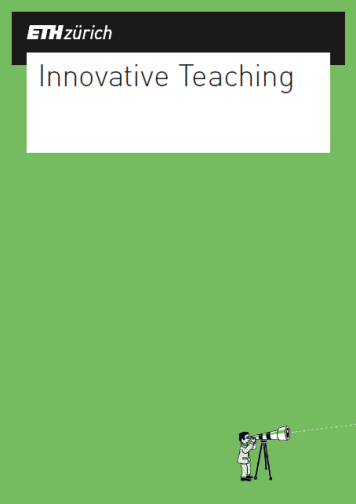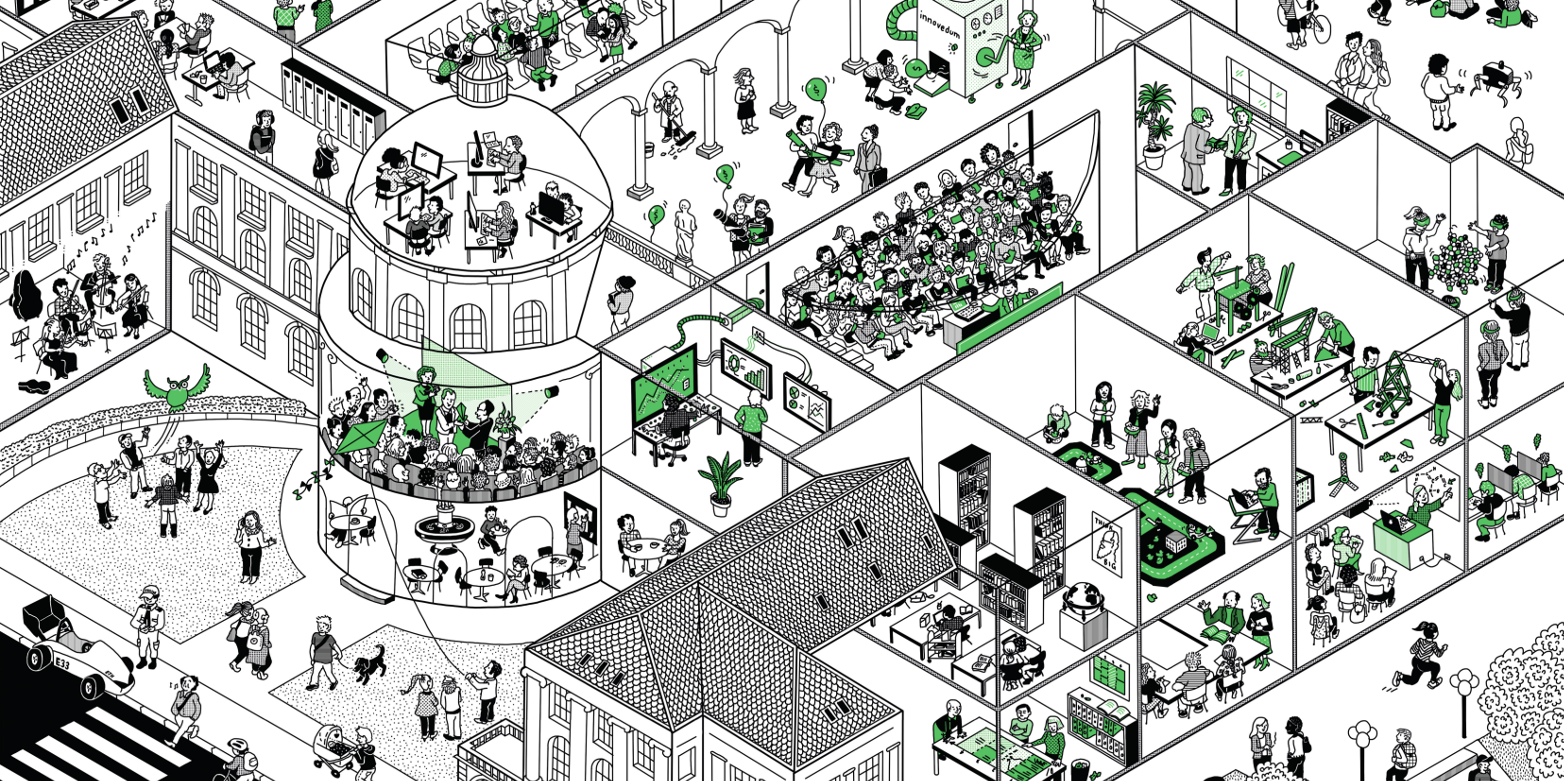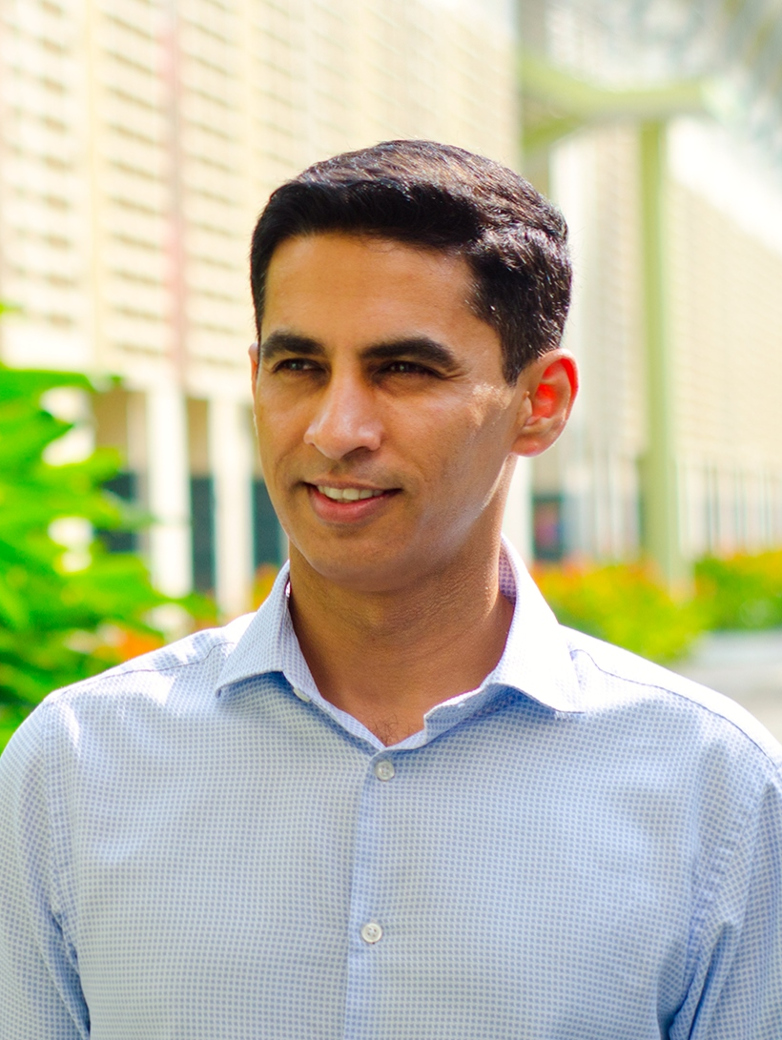Innovative Teaching
The brochure "Innovative Teaching", commissioned by the Rector, is all about new forms of teaching and how they are promoted at ETH Zurich. In his introductory guest article, Manu Kapur, ETH Zurich Professor of Learning Sciences, calls for theory to be better aligned with practice. Here is his unabridged discussion paper.
Facilitating the transfer of theoretical knowledge into professional practice
The main goal of teaching at universities is to equip students with the requisite knowledge, skills, and dispositions that enable them to work effectively in their professional careers. This assumes that students are easily able to transfer what they learn at the universities to their professional practice. However, decades of research on human cognition and learning consistently show that transfer is not only hard but rare.
Take an engineering student, for example, who may have learned advanced differential calculus, yet find it difficult to apply it to solve engineering problems in practice. Or a medical student, who crams in a lot of knowledge about anatomy, yet finds it difficult to remember it soon after the final exam, let alone use it for diagnoses during clinical practice. Or a science student, who learns a lot of science knowledge, yet may be lost when asked to conduct scientific inquiry using that very knowledge.
What is common across these examples? They all show a lack of transfer from school knowledge to disciplinary practice. That is, although students learn substantial amounts of formal, content knowledge in the domains, they find it difficult or are often unable to use this knowledge in the authentic practices of the domain. Why does this happen? Are our students not particularly bright? After all, experts lament that no matter how clearly they explain the concepts to their students, it baffles them why students still do not “get it”.
The brochure

The brochure "Innovative Teaching" is all about new forms of teaching and how they are promoted at ETH Zurich.
DownloadDownload the brochure (PDF, 6.2 MB)vertical_align_bottom
Rethink how we teach
Research in the sciences of human learning suggests that a lack of transfer is not as much a problem with the student as it is with their learning experience. In formal schooling contexts, this means that transfer is a function of how we teach our students. Any innovation in teaching would do well to address the problem of transfer. And this is where we need to rethink how we teach.
We need to innovate, but not for the sake of innovation per se. Instead, we need to innovate in ways that are consistent with, and advance, the science of how people learn. Although research in the cognitive and the learning sciences suggest several principles for designing effective teaching and learning, I focus on one key principle any innovation in teaching would do well to embody. Allow me to illustrate the principle with a thought experiment.
Imagine a carpenter wants to train his son or his daughter to learn the craft. Does he first make his child learn all the relevant knowledge from mathematics, because well, one needs arithmetic and geometry in carpentry? Does he also make his child learn all the relevant concepts in Physics, because knowledge of forces and equilibria is also critical for carpentry? How about throwing in some material science, communication skills, business management, and creativity courses in the mix too.
And when his child has not only learned all such knowledge, and passed examinations that test this knowledge in contexts that have little to do with carpentry, only then he brings his child to his shed and engages him/her in the practice of carpentry. Hopefully not. Instead, the carpenter is more likely to take his child to the shed, and engage in the authentic practices of carpentry. All knowledge and skills that the son learns is situated in the actual practice of carpentry. This is what knowledge-in-use looks like.
Coupling domain knowledge and disciplinary practice
Part of the problem with modern education systems is that we have intentionally divorced domain knowledge from the disciplinary practices of its use. Having ourselves created the problem, we then lament that our students find it difficult to transfer what they learn in school to disciplinary practices. I do not mean to be flippant, but I do paint an extreme case contrast to bring out the point. To be clear: domain knowledge and skills are important. They need to be taught. And experts need to teach them. The problem is that we are teaching them in ways that tend to decontextualised and misaligned with the disciplinary practices within which such knowledge will be used.
An obvious implication is to solve the problem of transfer at its root. This would mean aligning the practices of schooling with the practices of the discipline. Of course this is easier said than done, but then why should one expect the problems of learning to necessarily admit easy solutions. Returning to the examples, if design is a core engineering practice, then engineering knowledge and skills ought to be situated in the design process. This does not mean all knowledge is learning through the design process. What it means is that the design process then provides the context and the motivation for learning. Students should be engaged in design for the most part, which anchors their learning.
Likewise, if a core medical practice is differential diagnosis, then medical education should be anchored on differential diagnosis as the core activity. Medical students should be engaged in differential diagnosis, and most of their knowledge gets learned in the process of performing diagnoses. And likewise for other domains as well. Although I have taken the liberty of reducing a domain to one core practice, each domain is likely to have multiple core and peripheral practices. The point is that innovations in teaching should engage in the process of backward design.
Backward design process
By backward design, I mean starting with the end in mind. For example, what are the core professional practices of engineers? What do engineers really do? How does knowledge-in-use look like, that is, what kinds of knowledge, skills, tools and resources do they use in performing these practices? Once we have sense of what the disciplinary practice of engineers looks like, we can then design the teaching practices in alignment with the disciplinary practices. The same goes for other disciplines as well. What do doctors really do? What do scientists do? What do lawyers do? And so on. And then design the teaching practices in alignment with the professional practices in the domains.
Practical constraints will of course limit the degree to which alignment between teaching and disciplinary practices can be achieved. Still, it is instructive to use alignment as a key guiding principle when designing innovations in teaching. A typical counter to the above proposal goes something like: “but students need the knowledge and skills first before they can apply”. Mind you, that is falling back into the trap of decoupling domain knowledge and disciplinary practice – the very trap that we must try to avoid.
A couple of additional benefits of alignment are noteworthy. An analysis of disciplinary practices, especially knowledge-in-use, is likely going to result in a radical rethinking of and reduction in the amount of content knowledge that we focus on in the curriculum. Speak with an engineer or a doctor, and you will find that knowledge-in-use is typically a very small subset of the knowledge acquired during training. Likewise for other domains as well. Focusing primarily on knowledge-in-use should free up time for redesigning the curriculum, teaching and learning in alignment with the disciplinary practices.
Explicit and tacit knowledge
A second benefit of alignment is a better coupling between explicit and tacit knowledge. Explicit knowledge is knowledge that can be externalised, represented, codified, and communicated. Laws, principles, theorems, formalisms, and so on are examples of explicit knowledge. Tacit knowledge is something that cannot be externalised, let alone be codified or communicated. There are often times when an expert intuits, or is unable to explain how he or she thought of or did something, especially when engaged in disciplinary practices. It is one of those things that cannot be “taught”, but can be “caught”, yet it is absolutely essential for expertise development.
Research on expertise suggests that experts have not only large body of explicit knowledge but also highly-nuanced, situational, tacit knowledge. Expertise is a function of how experts are able to leverage both explicit and tacit knowledge to solve problems. Knowledge-in-use, therefore, is a coupling of explicit and tacit knowledge.
If the primary focus on schooling remains on explicit knowledge, then it will hinder the development of expertise. If, however, innovations in teaching can embody the coupling of both explicit and tacit knowledge, it will positively influence the development of expertise. Taken together, alignment can facilitate the coupling of explicit and tacit knowledge, which in turn, will increase the likelihood of transfer as well.


